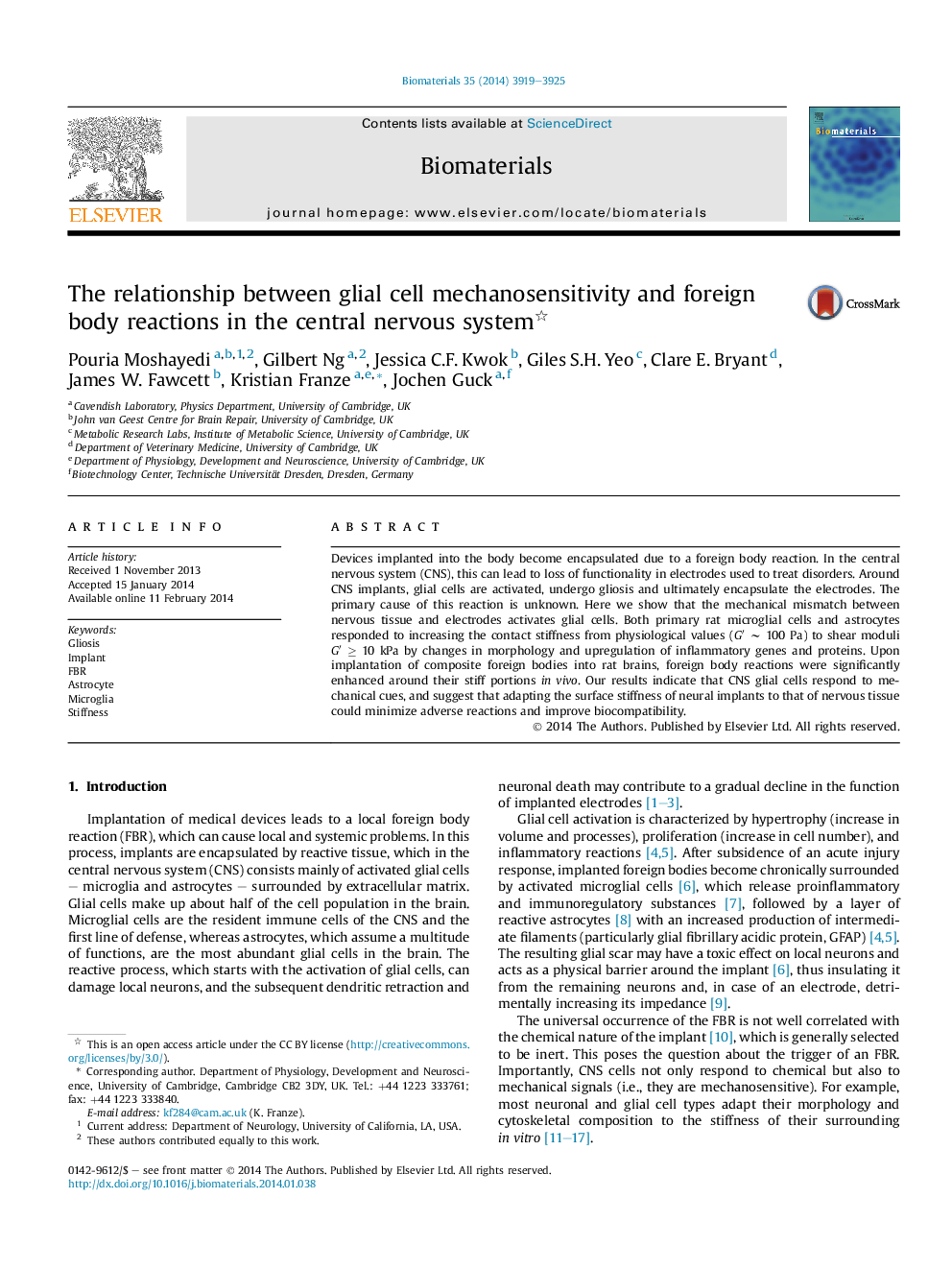| Article ID | Journal | Published Year | Pages | File Type |
|---|---|---|---|---|
| 10228024 | Biomaterials | 2014 | 7 Pages |
Abstract
Devices implanted into the body become encapsulated due to a foreign body reaction. In the central nervous system (CNS), this can lead to loss of functionality in electrodes used to treat disorders. Around CNS implants, glial cells are activated, undergo gliosis and ultimately encapsulate the electrodes. The primary cause of this reaction is unknown. Here we show that the mechanical mismatch between nervous tissue and electrodes activates glial cells. Both primary rat microglial cells and astrocytes responded to increasing the contact stiffness from physiological values (Gâ²Â â¼Â 100 Pa) to shear moduli Gâ²Â â¥Â 10 kPa by changes in morphology and upregulation of inflammatory genes and proteins. Upon implantation of composite foreign bodies into rat brains, foreign body reactions were significantly enhanced around their stiff portions in vivo. Our results indicate that CNS glial cells respond to mechanical cues, and suggest that adapting the surface stiffness of neural implants to that of nervous tissue could minimize adverse reactions and improve biocompatibility.
Related Topics
Physical Sciences and Engineering
Chemical Engineering
Bioengineering
Authors
Pouria Moshayedi, Gilbert Ng, Jessica C.F. Kwok, Giles S.H. Yeo, Clare E. Bryant, James W. Fawcett, Kristian Franze, Jochen Guck,
